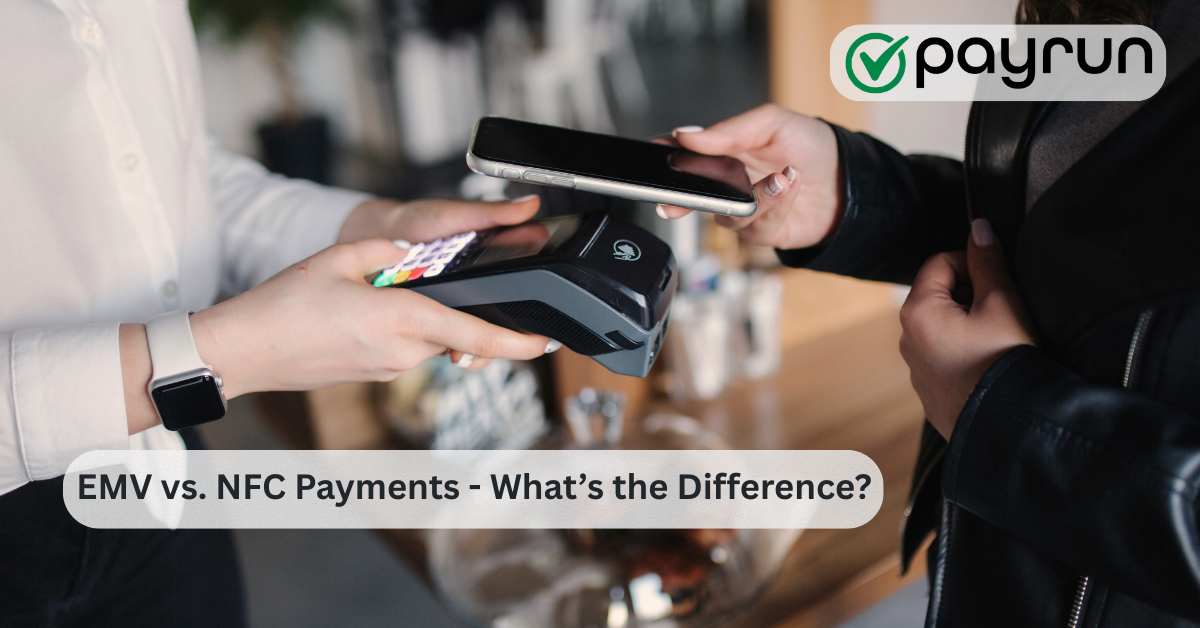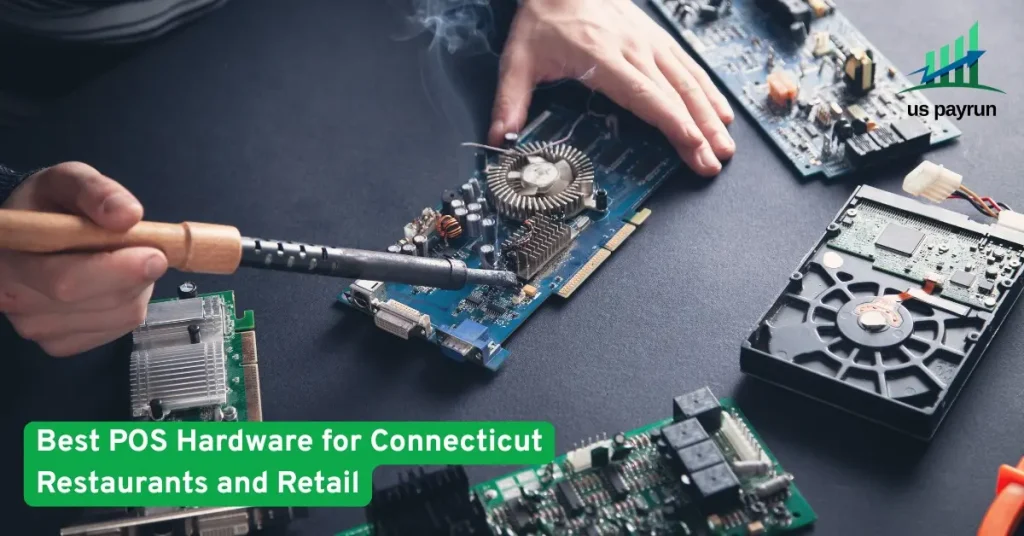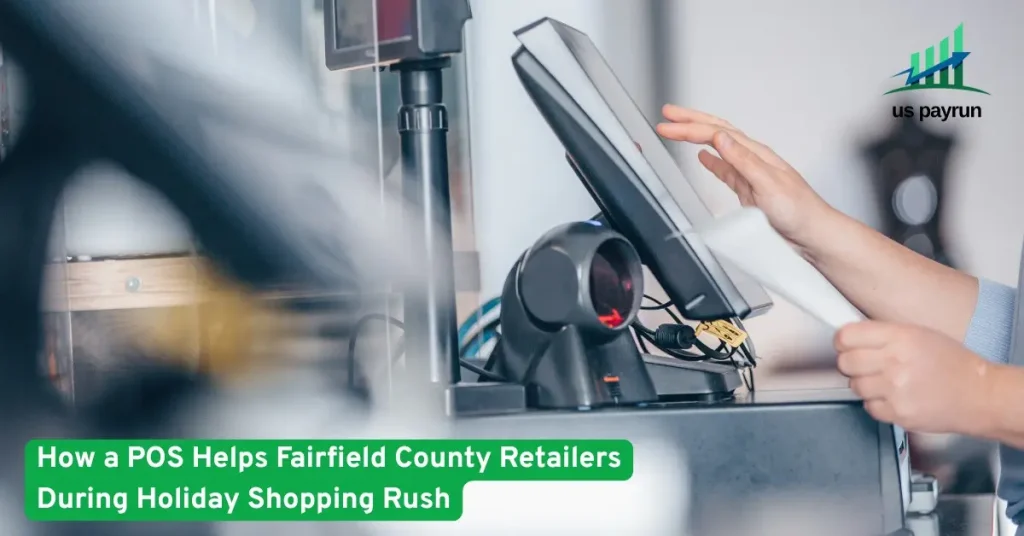
Are you evaluating how to upgrade your payment system? EMV vs. NFC Payments – What’s the Difference? is a common question for business owners. EMV (chip-and-PIN) payments involve inserting a smart card into a payment terminal, while NFC (Near Field Communication) payments happen when a customer taps a contactless card or mobile device. Each method encrypts transaction data for security, but NFC adds tap-to-pay convenience. Modern customers expect both fast, touchless payments and traditional chip-secured transactions at checkout. Understanding both helps ensure you meet customer preferences and keep data secure.
What Are EMV (Chip) Payments?
EMV (chip-and-PIN) is a secure payment technology using a microchip embedded in credit and debit cards. EMV transactions involve inserting or dipping a chip card into a payment terminal. Each time a transaction is processed, the chip generates a unique encrypted code to protect the payment data. This dynamic data approach significantly reduces fraud and counterfeit card use. EMV cards often require the customer to enter a PIN or provide a signature at checkout. Most modern point-of-sale (POS) terminals support EMV, helping businesses meet security standards and protect against fraud.
What Is NFC (Contactless) Payments?
NFC (Near Field Communication) is a short-range wireless technology used for contactless payments. An NFC transaction occurs when a customer taps or waves a card, smartphone, or wearable device near an NFC-enabled terminal. Digital wallets like Apple Pay or Google Pay use NFC to send encrypted payment tokens from the device to the reader. This tap-to-pay process is very fast and convenient, speeding up checkout lines. Despite the speed, NFC transactions use encryption and tokenization similar to EMV, meeting the same PCI data security standards. Contactless NFC is ideal for busy retail or quick-service environments where touchless checkout is preferred.
Key Differences Between EMV and NFC Payments
- Technology: EMV uses a chip card that must be inserted or dipped; NFC is wireless (tap-to-pay) communication at very close range.
- Devices: EMV works with chip-enabled credit or debit cards. NFC covers contactless cards and mobile wallets (smartphones, wearables).
- Speed: NFC transactions (tap) are faster at checkout. EMV chip transactions take slightly longer due to the card insertion process.
- Security: Both encrypt data and use dynamic tokens. EMV chips generate a unique code per transaction; NFC payments (including mobile wallets) use encrypted one-time tokens. Both meet PCI security standards to prevent fraud.
Supporting both chip and tap means secure, flexible checkout for any customer. For example, one customer can tap their phone and another can insert a chip card at the same terminal. Most modern POS systems accept both EMV and NFC. For retailers and customers alike, both often come down to chip insertion versus contactless tap.
Why Choose US Payrun
US Payrun offers a unified payment platform for businesses of all sizes. Our point-of-sale solutions support both EMV chip and NFC contactless transactions in one system. We prioritize security with PCI-compliant encryption and advanced fraud protection. With US Payrun, you get reliable support and easy integration with your existing systems. Whether you run a small retailer or a large enterprise, our solutions simplify transactions, cut costs, and keep sales flowing smoothly.
Conclusion
Understanding EMV vs. NFC Payments – What’s the Difference? ensures you pick the best payment options for your business. EMV (chip) encrypts transaction data for security, while NFC (tap-to-pay) adds fast, touchless convenience. Together they cover all customer preferences and improve checkout efficiency. Ready to upgrade? Contact US Payrun to integrate both methods and schedule a demo today.
Frequently Asked Questions (FAQs)
Q: What is the difference between EMV and NFC payments?
EMV uses a chip-based card inserted into the terminal (often with a PIN). NFC is contactless: customers tap a card or mobile device. Both encrypt data, but EMV transactions rely on the chip and PIN, while NFC uses wireless tokenization.
Q: Are contactless (NFC) payments as secure as EMV chip transactions?
Yes. Both EMV and NFC use encryption and dynamic tokens for security. NFC payments send one-time codes (tokens) instead of your actual card number. This meets PCI standards, so a tap-to-pay purchase is just as safe as inserting a chip card.
Q: Do I need new equipment to accept NFC contactless payments?
Most modern POS terminals support both EMV and NFC. If your card reader already accepts chip cards, it likely also handles taps. US Payrun’s devices are certified for both chip and contactless, so you can accept all payment types without extra hardware.
Q: Can I accept both EMV and NFC payments with the same terminal?
Yes. Most current POS terminals are equipped to handle both EMV chip and NFC tap-to-pay transactions. This dual compatibility ensures that your business can cater to all customer preferences—whether they prefer inserting a chip card or tapping their phone.
Q: Which is better for my business—EMV or NFC?
It depends on your customers and transaction volume. EMV is essential for fraud protection and compliance, while NFC offers speed and contactless convenience. Ideally, your business should support both to maximize flexibility and customer satisfaction.
Ready to Offer Secure, Fast Payments?
Sign up with US Payrun today and start accepting EMV chip and NFC contactless payments with ease. Our all-in-one solution keeps your transactions secure and your customers happy. Don’t wait—empower your business with the payment technology it deserves.



